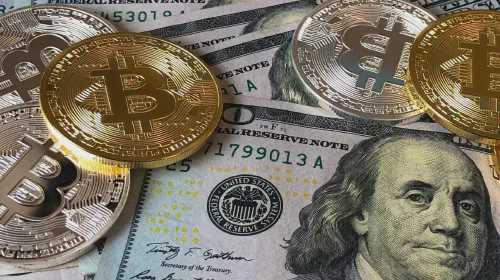Polkadot vs. Solana: A Comprehensive Comparison of Strengths and Weaknesses
Salomon Kisters
Aug 15, 2022This post may contain affiliate links. If you use these links to buy something we may earn a commission. Thanks!
The ever-expanding blockchain industry is crowded with over 12,000 cryptocurrencies built on almost 1,000 different blockchain platforms.
Such immense variety often leads to confusion for investors, especially when two or more projects seemingly attempt to solve the same problems.
In this article, we will compare and contrast two of the ten biggest cryptocurrencies by market cap, i.e., Polkadot and Solana, and decide which is better.
What is Polkadot?
The concept of Polkadot first emerged in 2016 when its creator, Gavin Wood, wrote the Polkadot Whitepaper. Wood is an English computer scientist who is one of the best-known personalities in the cryptocurrency industry. He is one of the co-founders of Ethereum. He also proposed and played a critical role in the development of Solidity – a programming language used for smart contracts on Ethereum. Apart from that, Wood also worked at Microsoft as a research scientist.
Polkadot aims to solve two of the most significant issues in the blockchain industry, i.e., sustainability and interoperability. Many earlier blockchain networks, such as Bitcoin and Ethereum (soon shifting to the PoS model), use the proof-of-work (PoW) consensus model, which involves using high computational power and massive amounts of electricity to process transactions.
This makes them harmful to the environment, something that has to be solved in order to ensure a thriving future for the industry.
Moreover, the emergence of so many blockchain networks over the course of the last few years has given rise to the issue of interoperability. Each blockchain ecosystem has a unique mechanism to tackle a wide range of problems.
However, almost all of these blockchains operate as closed networks, making them unable to communicate with each other.
Polkadot innovation provides a solution to both these problems.
Using a nominated-PoS consensus model allows the protocol to read and validate transactions rapidly without the need for any complex computational power, making Polkadot the lowest carbon footprint blockchain. The multi-chain structure enables it to facilitate cross-chain communication without compromising network security.
Polkadot was developed by Parity Technologies, a UK-based software company founded by Gavin Wood. The Web3 Foundation, a non-profit based in Switzerland, coordinates the development of the project. Polkadot set a record by raising around $145 million through ICO in 2017 and an additional $100 million in 2019-20.
Polkadot Mainnet was launched on May 27, 2020. However, the project is still under development. Although Polkadot is focused on enabling interoperability among different blockchain networks, it’s also a smart contract programmable blockchain.
What is Solana?
Solana is the brainchild of Russian computer engineer Anatoly Yakovenko. The project was initiated in 2017 when Yakovenko wrote the Solana Whitepaper. He had previously worked at Qualcomm for 13 years and contributed significantly to developing distributed systems at Mesosphere and Dropbox. Yakovenko also brought Greg Fitzgerald and Eric Williams on board – two of his former colleagues at Dropbox and Qualcomm.
The primary problem Solana attempts to solve is the inability of the blockchain to process large numbers of transactions while maintaining the decentralized nature framework. The two biggest and most popular cryptocurrency blockchains, Bitcoin and Ethereum, can validate only 7 and 30 transactions per second, respectively. Compare it to centralized financial services, such as Visa, which can carry out almost 24,000 transactions every second.
Yakovenko observed that incorporating an “internal clock” in the blockchain mechanism could solve this problem. By doing so, one can increase the transaction speed of the blockchain enormously without compromising the decentralized nature of the system. Solana achieves this by using a novel consensus mechanism, a hybrid between proof-of-history and proof-of-stake models.
Solana was created by Solana Labs, a software company based in the United States, and its development is coordinated by the Solana Foundation, a non-profit institution based in Switzerland. It raised almost $25 million through various ICOs (Initial Coin Funding) during 2017-2020. It raised an additional $340 million in 2021 from several crypto venture capital funds.
The Solana Mainnet went live in March 2020. However, it must be noted that the network is still in beta. Solana is a smart contract programmable ecosystem which means developers (individual or institutional) can program their protocols, applications, platforms, and much more on its network. Its goal is to replace centralized financial institutions and mainstream marketplaces like Nasdaq.
How Solana works
As mentioned before, Solana uses a hybrid consensus model which combines the proof-of-history (PoH) and proof-of-stake (PoS) mechanisms. Although PoH is used to confirm and record transactions on the network, it must be noted that, technically, it is not a consensus mechanism but a cryptographic clock.
In the PoH model, network nodes do not have to communicate and share vast amounts of data to reach a consensus and validate transactions. Instead, this consensus mechanism timestamps all the transactions and events on the network. The blockchain keeps a historical record of all the previous events, which are stored chronologically. Using this data, the nodes can confirm the authenticity of every new transaction. Each node runs a clock of its own, making the entire network super-efficient.
The nodes that are responsible for timestamping are called validators. Anyone can become a validator by staking their SOL tokens. According to Solana Beach, currently, there are 1913 validators on the Solana network, with just 30 of these holding more than 30% of the total stake amount.
However, the network incorporates several other protocols with PoH to achieve high transaction speed and maximum efficiency. These are:
- Tower Byzantine fault tolerance
- Gulf Stream
- Pipelining
- Cloudbreak
- Turbine
- Sealevel
- Achievers
How Polkadot works
The entire Polkadot structure is divided into two main components: the relay chain and parachains. The relay chain provides a foundation for the whole network. All the parachains depend on the relay chain to reach consensus and maintain security. You can think of the relay chain as the central hub and all the parachains as its branches.
The relay chain leverages the nominated-PoS consensus model to reach consensus, which works almost the same as delegated-PoS. However, experts believe that the former is much more efficient than the latter. The network nodes are of two types, i.e., validators and nominators. Validators are responsible for authenticating new transactions and recording them on the blockchain. They process transactions for both: the relay chain and parachains.
However, a node has to be elected by the nominator nodes to become a validator.
According to the Polkadot official website, the network currently has 297 active validators. 707 nodes are waiting validators, which means they haven’t been nominated as validators yet. The total number of nominator nodes is 33,000. However, only 21,400 of them are actively working at the moment.
In order to become a part of the Polkadot validator set, participants need to stake at least 1.8 million DOT tokens. However, the minimum stake for nominators is currently set at 128 DOT tokens.
Tokenomics of Solana
The native cryptocurrency of the Solana blockchain is SOL. It is used to pay transaction fees and will be required in the governance model of the network in the near future.
Like Polkadot, there is no limited supply for SOL tokens, and technically an unlimited number of SOLs can be created. However, the current unfixed maximum supply is 511,616,946 SOL, while the circulation supply is only 346,159,389 SOL. Having no fixed supply, the cryptocurrency is inflationary. The inflation starts with an 8% rate and will be reduced to just 1.5% in 15 years.
About 25% of the initial total supply was allocated to the Solana Labs. 38% of it was kept for the community treasury, which is under the custody of the Solana Foundation. In addition, earlier investors purchased about 35% of it in ICOs. Only 2% of the total supply is for retail investors.
Tokenomics of Polkadot
The native cryptocurrency token for the Polkadot ecosystem is DOT. Although it is used to pay transaction fees, parachain protocols are not bound to pay the fee using only DOT.
Polkadot does not have a fixed maximum supply. At the start of the network, the maximum supply was supposed to be only 10 million DOT tokens. However, after a community vote, it was increased to 1,103,303,471 DOT. The current circulating supply is around 987,579,314 DOT.
50% of the total supply was given to the token sale investors. Apart from that, 5% was allocated to a private sale in 2019 and 3.4% to another in 2020. 11.6% of it is retained by Parity Technologies for future fundraising if needed. 30% of the total supply is held by the Web3 Foundation for network development and other activities.
Polkadot vs. Solana - Which is better?
Both blockchains are two of the biggest and the most popular projects in the industry with massive institutional interest. For example, Solana is partnered with FTX exchange to develop Serum. Moreover, OpenSea – the biggest NFT marketplace – recently started supporting trading Solana-based tokens on its platform.
Similarly, at the end of last year, Enjin announced the launch of Efinity on the Polkadot network. Katie Haun – CEO and founder of Web3 venture capital, Haun Ventures – poured $10 million into Moonwell, a Polkadot lending protocol.
As far as network speed goes, Solana is the fastest blockchain network in the industry, with the potential to process about 65,000 transactions per second. It clearly beats Polkadot, which can only validate about 1,000 transactions in the same period.
When it comes to sustainability and interoperability, Solana does not even come close to Polkadot, which is the lowest carbon footprint blockchain today. In this respect, Polkadot takes the prize here.
Final thoughts
These two projects are so dissimilar that deciding which is superior is impossible.
Polkadot attempts to address scalability and interoperability issues in blockchain technology.
Solana is a blockchain that aims to provide low fees while also being fast.
At the end of the day, Polkadot and Solana’s mission is to improve the way cryptocurrency is used to better people’s live
Stay informed with the latest insights in Crypto, Blockchain, and Cyber-Security! Subscribe to our newsletter now to receive exclusive updates, expert analyses, and current developments directly to your inbox. Don't miss the opportunity to expand your knowledge and stay up-to-date.
Love what you're reading? Subscribe for top stories in Crypto, Blockchain, and Cyber-Security. Stay informed with exclusive updates.
Please note that the Content may have been generated with the Help of AI. The editorial content of OriginStamp AG does not constitute a recommendation for investment or purchase advice. In principle, an investment can also lead to a total loss. Therefore, please seek advice before making an investment decision.

Top Enterprise Blockchain Platforms
There are several types of enterprise blockchain platforms available to meet the needs of large corporations. Let's have a look at the top enterprise blockchain platforms.

What Are Algorithmic Stablecoins?
Algorithmic stablecoins are backed by an on-chain protocol that pegs their value to a supply/demand ratio maintained by an algorithm. Let's have a closer look.

Polkadot: Decentralized Web Protocol and Advanced Features Explained
Learn about Polkadot, a decentralized web protocol and blockchain with advanced features designed by Gavin Wood. Explore how Polkadot works and its unique advantages.
Protect your documents
Your gateway to unforgeable data. Imprint the authenticity of your information with our blockchain timestamp